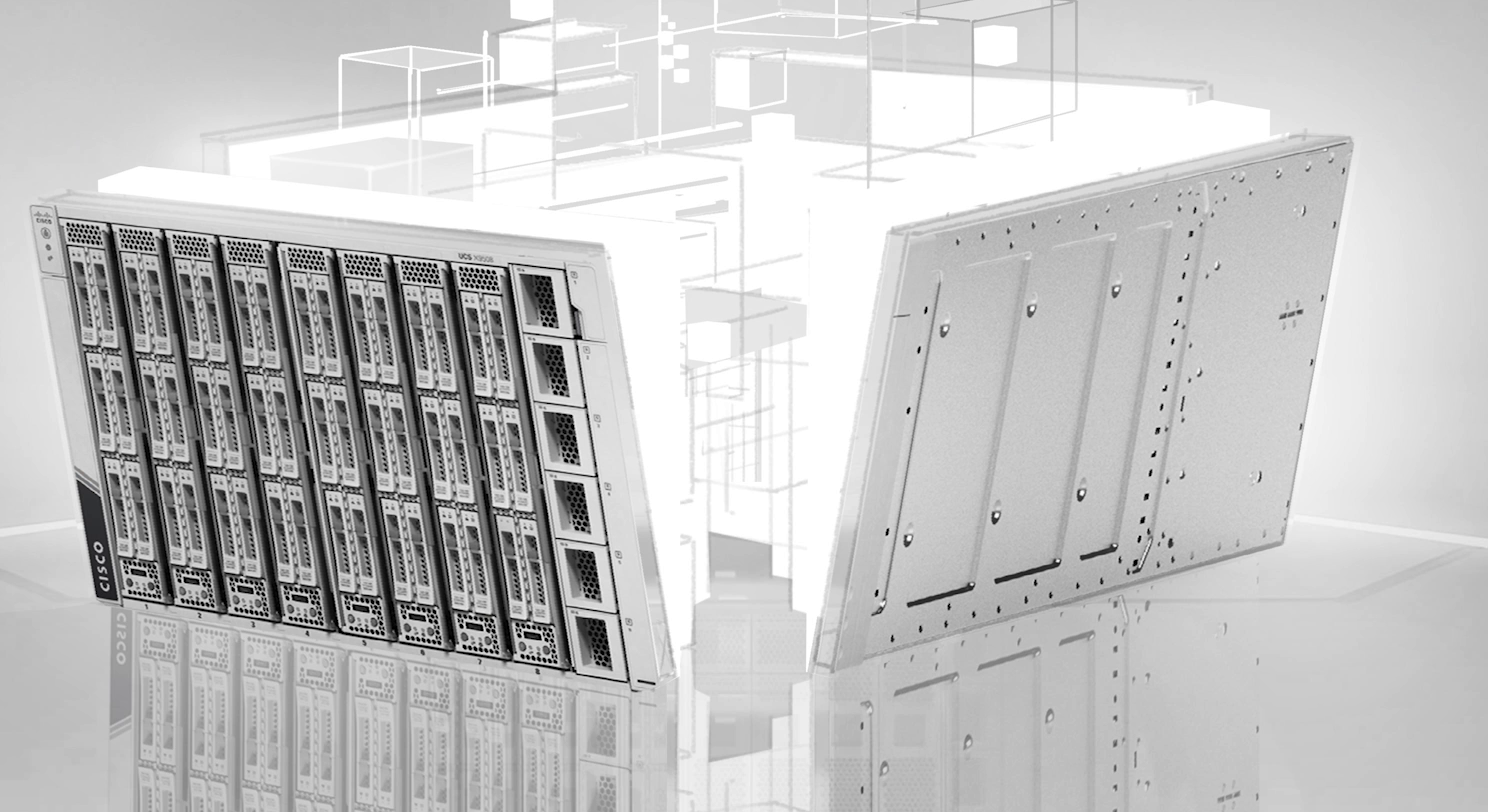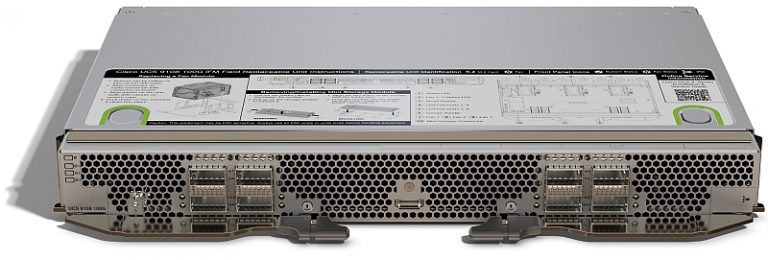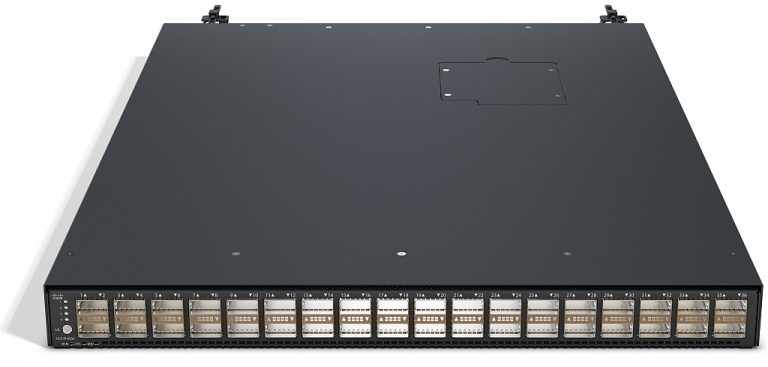- Select Prime members can get Kindle Unlimited for 3 months at no cost - here's how
- Modernization means putting developers in the driver’s seat
- Get a free iPhone 16 Pro for free from T-Mobile, no trade in required - here's how
- The LG C4 OLED for $800 off is one of the best Prime Day TV deals right now
- Prime members can save $10 on any $20 or more Grubhub+ order for a limited time - here's how
Cisco UCS Unified Fabric now 100Gb end-to-end for X-Series

Since 2009, Cisco UCS Unified Fabric has been one of the key differentiators between UCS servers and the rest of the industry. Unified Fabric is the combination of data, storage, and management traffic on a single cable. This greatly simplifies your server and networking infrastructure and provides both CapEx (adapters, cables, switches) and OpEx (warranty, power & cooling, management) savings. Cisco’s unified fabric is a single cable that connects the UCS X-Series chassis to the fabric Interconnects
In a redundant deployment, you reduce the number of cables and switches 5:2 – two switches/cables for data and storage and one for management.
12+ years ago, Cisco UCS first shipped with 10Gb when the rest of the industry’s standard was 1Gb. In March, we announced we were leapfrogging the industry again by making 100Gb standard for UCS X-Series vs. 25Gb for other vendors.
The Cisco UCS X-Series Unified Fabric consists of three components: VICs, IFMs, and 6500 Series Fabric Interconnects.
Cisco UCS Virtual Interface Card (VIC) 15000 Series
VICs (Virtual Interface Cards) are more than a NIC or an ordinary converged network adapter (CNA – Ethernet + storage). Other vendors offer NICs or CNAs, but none offer the full functionality of a VIC. The two key differentiators are the inclusion of management traffic and the number of virtual adapter interfaces.
Cisco UCS servers are configured via policies and templates. The VIC receives the configuration from Cisco Intersight and is pushed to the server. This removes the need for a server management network.
Virtual adapter interfaces come in two flavors – data and storage. These virtual adapter interfaces extend the network fabric directly to both servers and virtual machines via end-to-end network virtualization so that a single connectivity mechanism can be used to connect both physical and virtual servers with the same level of visibility and control. Each can have their own quality service, guaranteeing bandwidth and QoS thus providing optimal user experience. Cisco VICs supports more virtual adapter interfaces than any other NIC or CNA giving you the ability to tune and shape traffic to every application.
I’ll leave it to the data sheet to call out all the hardware features like low latency and kernel bypass for performance optimizations among others.
Cisco UCS 9108 100G Intelligent Fabric Module (IFM)
An IFM is the connection point between the X9508 Chassis (and servers) and the Fabric Interconnect – either the 6400 or 6500 series. Our 2nd gen IFM ups the speed from 25Gb to 100Gb. Like its predecessor, each IFM has eight ports, and they are always deployed in redundant pairs. The amount of bandwidth is determined by the number of ports used. If you are looking to future proof but don’t need the full 800Gb per IFM, you just use fewer ports. As your needs increase, just use the remaining ports. If you’d like some more details on the physical connections to the VIC and security, I’d point to my blog from last year that goes over IFMs in more detail.

Cisco UCS 6536 Fabric Interconnect
The 36 port Cisco UCS 6536 Fabric Interconnect supports Cisco UCS X-Series, UCS B-Series, and UCS C-Series servers. It offers line-rate, low-latency, lossless 1/10/25/40/100 Gigabit Ethernet, Fibre Channel, NVMe over Fabric (NVMe/FC, NVMe/TCP, NVMe over ROCEv2), and Fibre Channel over Ethernet (FCoE) functions. The total switching capacity is 7.42 Tbps.
Of the 36 ports, the FI has 32 40/100-Gb Ethernet and 4 unified ports that support 40/100-Gb Ethernet ports or 16 Fibre Channel ports after breakout at 8/16/32-Gb FC speeds. The switch also supports two ports at 1-Gb speed using QSA, and all 36 ports can breakout for 10- or 25-Gb Ethernet connectivity and support FCoE.

Putting Unified Fabric all together
The adage is a picture is worth 1,000 words. To save you reading 1k words, here is a diagram showing Cisco Unified Fabric and the entire UCS portfolio.

What can 5th Gen Unified Fabric do for you?
Unified Fabric will simplify your infrastructure and save you money. The architecture means there are few components to procure, install, power, and maintain. Less money spent upfront and less time and money spent over their life. This will increase your business agility and allow you to focus on adding value to your business vs. keeping the lights on.
Then add in the performance benefits that 100Gb line rate, low latency end-to-end solution provides for your applications and user experience. You will have increased the reliability, efficiency, and scalability of the network.
What’s next?
Next week, I’m circling back to GPUs on the UCS X210c M6 Compute Node itself.
Resources
Share:

